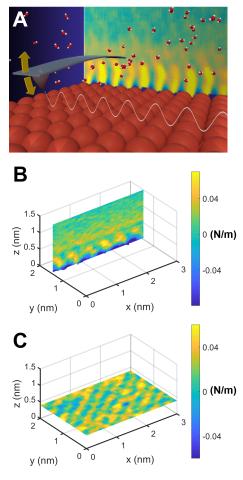Amongst the challenges for a variety of research fields are the visualization of solid-liquid interfaces and understanding how they are affected by the solution conditions such as ion concentrations, pH, ligands, and trace additives, as well as the underlying crystallography and chemistry. In this context, three-dimensional fast force mapping (3D FFM) has emerged as a promising tool for investigating solution structure at interfaces. This capability is based on atomic force microscopy (AFM) and allows the direct visualization of interfacial regions in three spatial dimensions with sub-nanometer resolution. Here we provide a detailed description of the experimental protocol for acquiring 3D FFM data. The main considerations for optimizing the operating parameters depending on the sample and application are discussed. Moreover, the basic methods for data processing and analysis are discussed, including the transformation of the measured instrument observables into tip-sample force maps that can be linked to the local solution structure. Finally, we shed light on some of the outstanding questions related to 3D FFM data interpretation and how this technique can become a central tool in the repertoire of surface science.
Publication - Journal Article Visualizing Solution Structure at Solid-Liquid Interfaces Using Three-Dimensional Fast Force Mapping
Publication Image

Description
English
